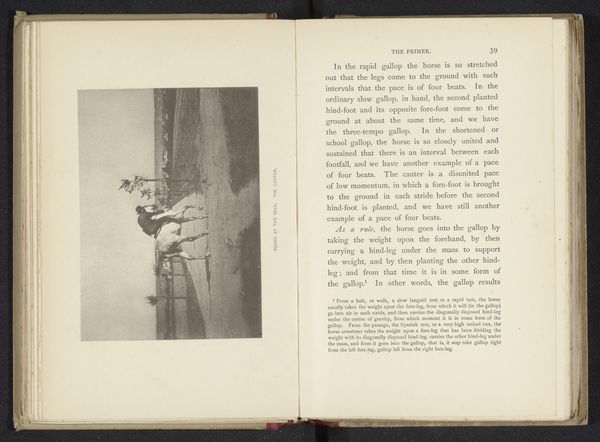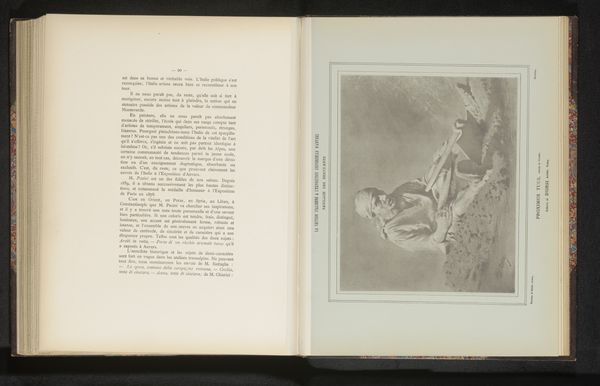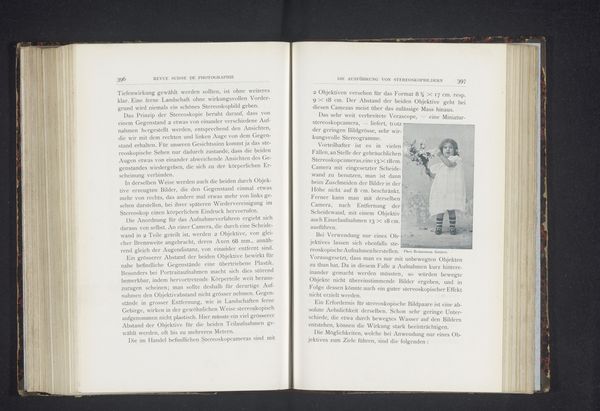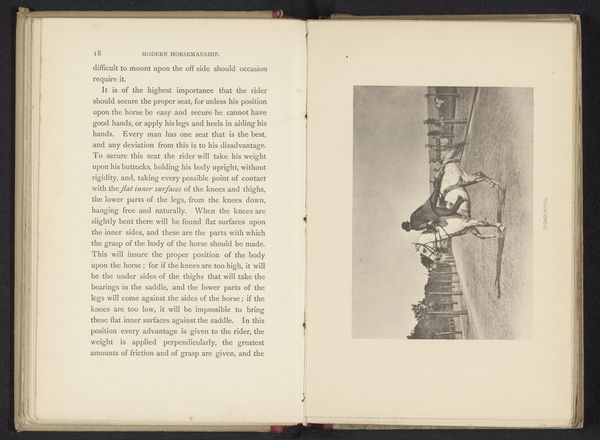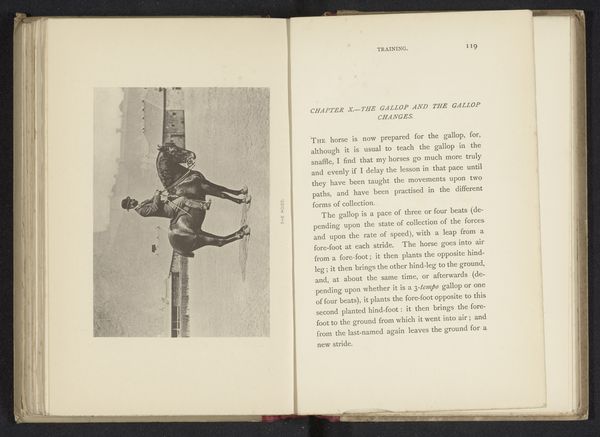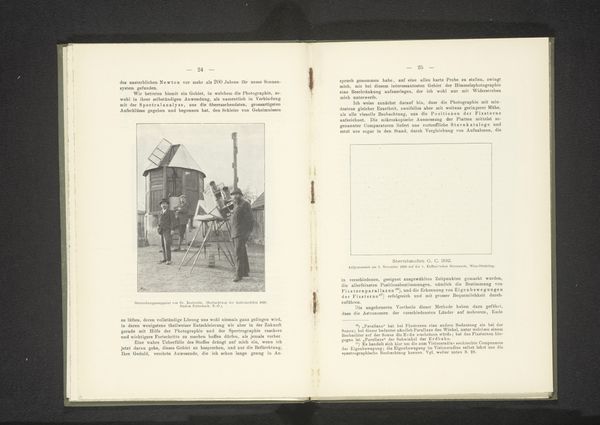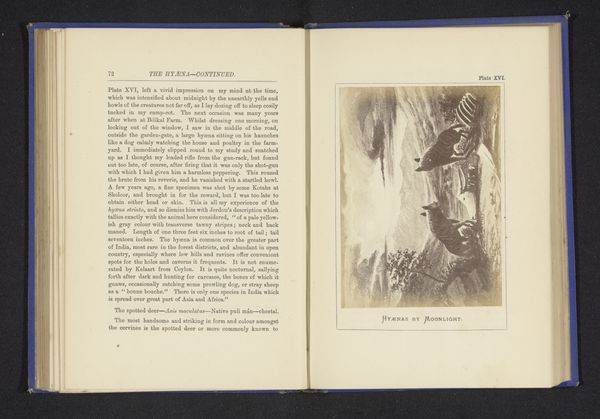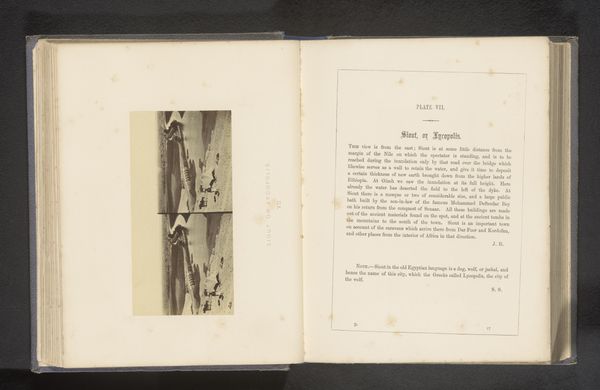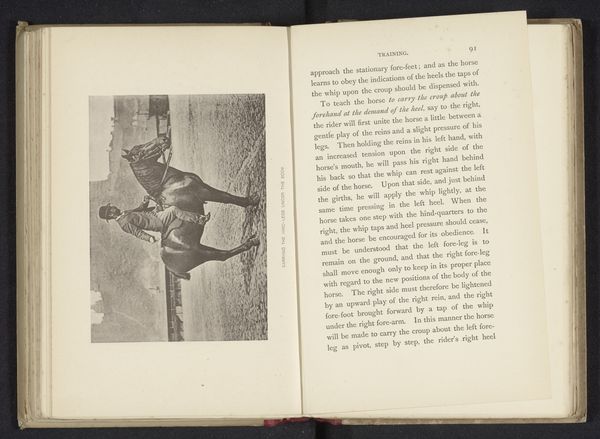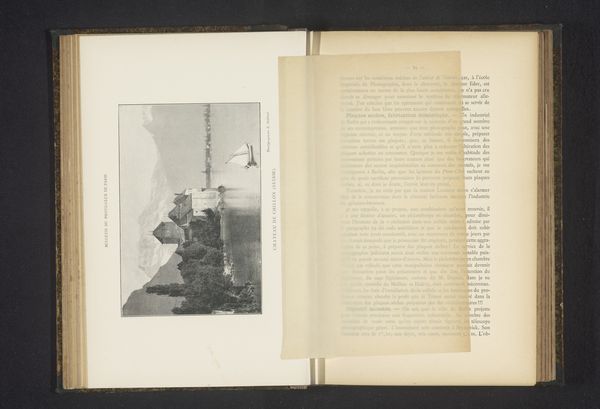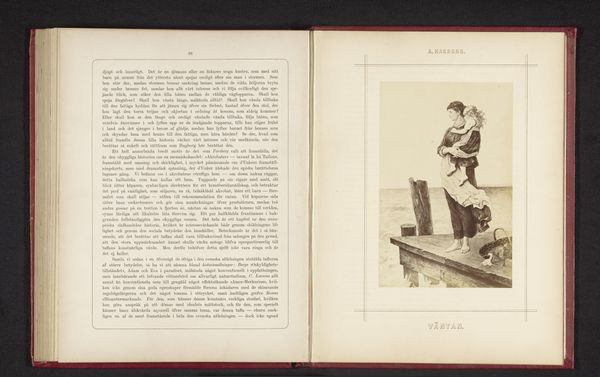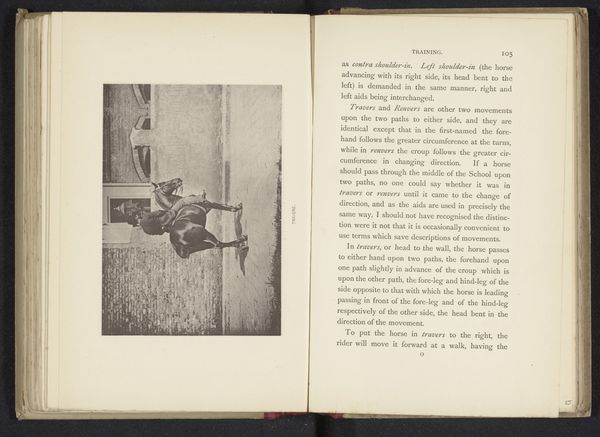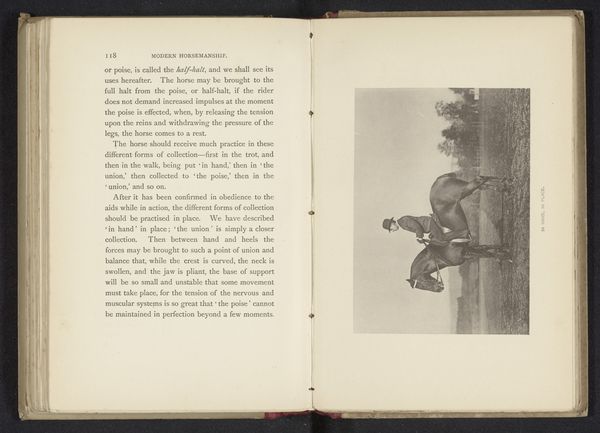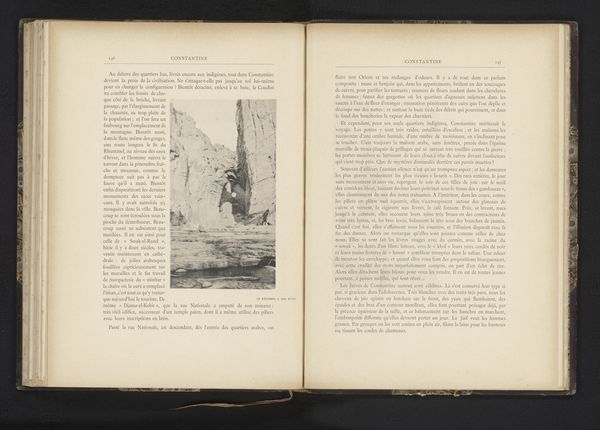
print, photography
#
portrait
# print
#
book
#
photography
#
modernism
Dimensions: height 131 mm, width 89 mm
Copyright: Rijks Museum: Open Domain
Editor: So, here we have a page from an old book. The image, attributed to H. Cuénod and dating from before 1902, titled "Man in uniform wijst naar een bedrukt doek," seems to be a photograph, perhaps reproduced as a print in the book. There's a stark contrast between the figure in uniform and the rather whimsical graphic he's pointing at. How do you interpret this work, considering its context within a publication? Curator: The framing within the book is crucial. We are encountering this image not as an autonomous art object, but within a discourse about art and, perhaps, photography's relationship to it. The uniformed man juxtaposed with the abstract, almost cartoonish graphic presents a fascinating tension. Who was the intended audience and how does it challenge traditional definitions or roles around that time? Is this, for instance, about the militarization of art, and how the structure and rigid rules get redefined in modernity? Editor: That is a very interesting reading, the relation between military authority, and visual aesthetics… Does this mean that, maybe, we should think of how these concepts can shape, or restrain, artists? Curator: Precisely. Think about the early 20th century. Artistic movements were often intertwined with socio-political ideologies. Examining publications like this gives us insight into the public sphere. Do you notice that the text references "art et la photographie", what are the social anxieties or promises held in that pairing? Editor: I see! This tension is much more pronounced now that you mention this and it all seems very exciting; looking at this book and how the context around its photographs could provide an excellent place to continue reflecting. Curator: Absolutely, thinking of how visual elements and how socio-historical powers have affected representation really changes the game of art.
Comments
No comments
Be the first to comment and join the conversation on the ultimate creative platform.
